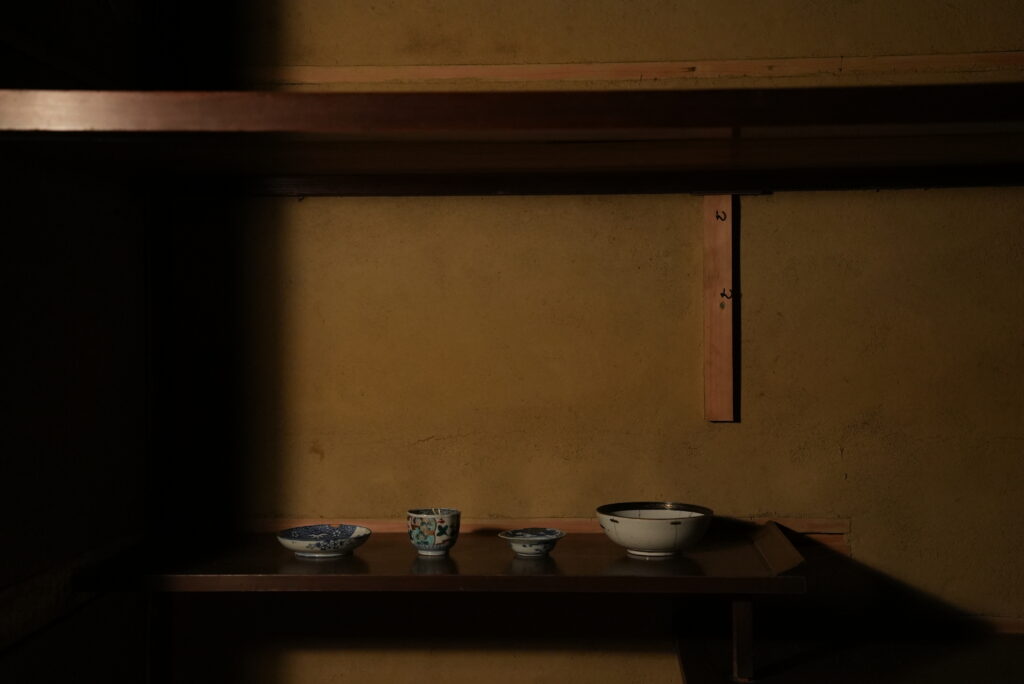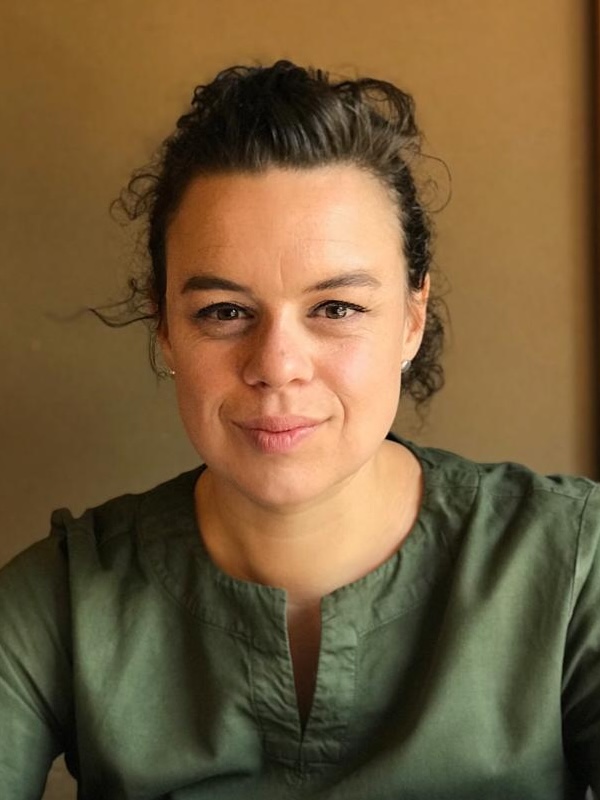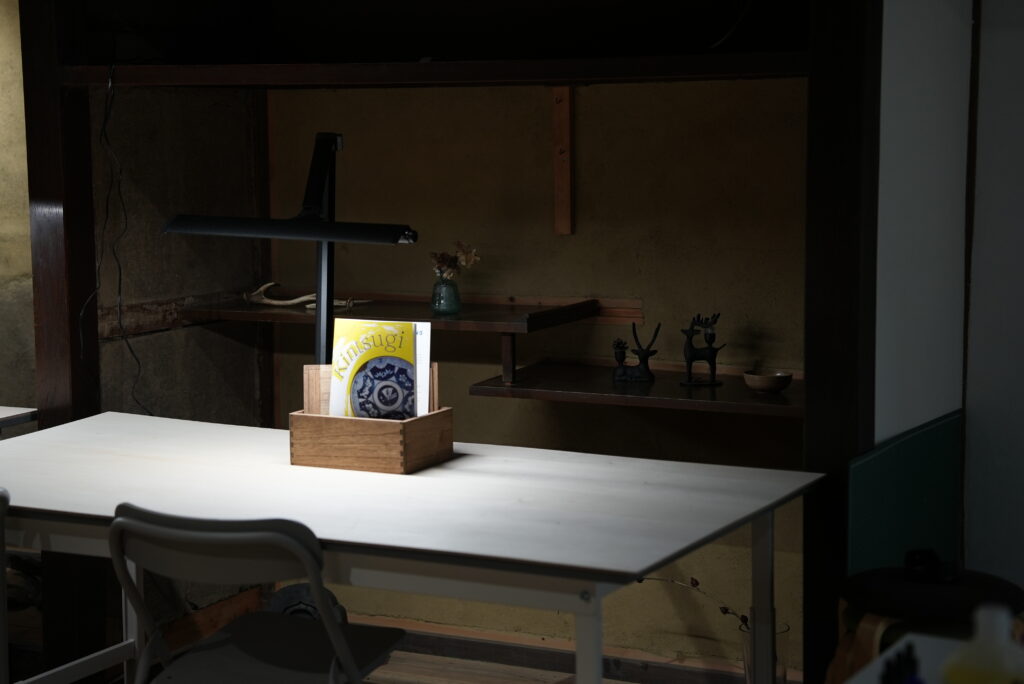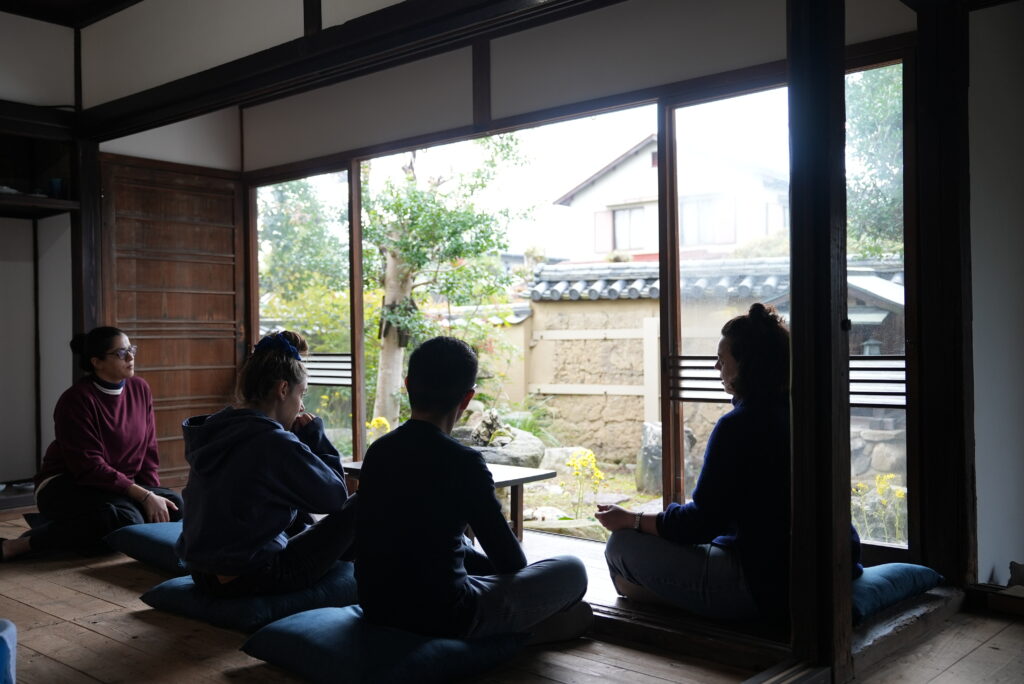
2026 Kintsugi Residency
Kintsugi for Artists: A Four-Week Immersive Program in Traditional Urushi Kintsugi & Maki-e Techniques
2026 Program Dates
- Spring: March 28th to April 24th
- Autumn: October 3rd to October 30th
Program Overview
Kintsugi Residency is a four-week immersive program designed specifically for artists and creative practitioners who seek to build a foundation in urushi-based kintsugi practice and maki-e, a decorative method originated in urushi lacquer art. Artists will gain the essential knowledge to plan and carry out traditional urushi-based kintsugi repairs and apply maki-e decorative techniques in their own kintsugi practices.
Highlights
- Kintsugi for Artists — a practice-driven curriculum tailored to creative practitioners to build an independent practice in art or kintsugi repair.
- Maki-e & Lacquer Art Instructions — an introduction to traditional decorative techniques of maki-e, the traditional urushi artform that kintsugi is based on.
- Kintsugi Kit — each artist will receive a professional urushi-based kintsugi kit including valuable real gold powder, a selection of urushi lacquers, brushes, spatulas, etc., to support your residency projects and beyond the residency.
- Kintsugi Handbook — an English-language kintsugi textbook specially made for the program
- Guided Studio Projects — from start to finish
- Different kinds of kintsugi repair methods using natural urushi lacquer.
- An introduction to build a foundational knowledge in urushi lacquer and maki-e techniques.
- Your personal projects are encouraged with instructor guidance.
- Curated Field Trips — to local suppliers, cultural places, and a tea ceremony experience to deepen understanding of kintsugi, urushi, aesthetics, and traditional craftsmanship.
- Dedicated Studio Environment — each artist will have a personal work desk in a shared studio. There will be studio tools and a shared urushi furo (the storage to cure kintsugi and urushi artworks).
- 4-weeks Accommodation in Toma House AIR – choose between staying in the 18-century historic Toma House, or in the newly renovated annex Toma Beige next door.
This Program is For
- Artists, potters, and ceramicists who are seeking to learn traditional urushi-based kintsugi and maki-e techniques to integrate into their own artistic practices.
- Craftspeople, conservators, designers and related practitioners who are interested in kintsugi repairs.
- Anyone who wants to learn traditional kintsugi and creative ways to decorate with maki-e techniques.
- Prior experience with kintsugi, urushi and maki-e is not required.
2026 Program Fees
The program fee vary from the building/room selected by the applicant, please refer to our Application Guidelines below for accommodation, program fees, and Question 7 in the FAQ section below for more details:
- Spring Session: 2026 spring-only special campaign offer
- From 471,000 yen for rooms in Toma Beige
- From 526,000 yen for rooms in Toma House
- Autumn Session: standard program price
- From 542,000 yen for rooms in Toma Beige
- From 597,000 yen for rooms in Toma House
- Notes for artists applying for external grants and funding:
- Once a place is offered, we will prepare necessary documents to support your funding applications.
- To allow enough time to secure external funds, early submission is strongly encouraged.
File: 2026 Kintsugi Residency Guidelines, Accommodation and Program Fees
URL: https://drive.google.com/file/d/1VAT3mreudngZc1LhVZKocjQ5h5hTDfJr/view?usp=sharing
Application Procedure
- Please read and understand the above Application Guidelines before starting the application.
- Fill in the Online Application Form
- Spring Session: March 28th to April 24th
- Autumn Session: October 3rd to October 30th
- Application Form URL – https://docs.google.com/forms/d/e/1FAIpQLSdjH68-8jqQVyt-N9tPvw_u90JUp5Ff4pz9YFQ7Pkm-RLmr_g/viewform?usp=publish-editor
- An application confirmation e-mail will be sent to you.
- Once you are selected to join the program, we will send you an invitation agreement, followed by the program invoice
- Application End Dates:
- Spring Session: 30th January, 2026
- Autumn Session: 10th April, 2026
- Early application is encouraged, as candidates are accessed and offered places on a rolling-basis
Clementine Nuttall – Artist and Instructor

Your primary instructor, Clementine Nuttall, is a British artist, conservator, and craftsperson with a decade of experience working with kintsugi. Driven by a deep passion for the philosophies of making, mending, and material culture, she moved to Tokyo in 2017, as a recipient of the Japanese Ministry of Culture’s Monbukagakusho Scholarship, to study kintsugi at Tokyo University of the Arts’ Department of Urush.
Clementine is committed to preserving and sharing this traditional Japanese technique with a global audience while exploring its potential to contribute to a more sustainable world. She will guide you through the fundamental processes of kintsugi, encouraging you to approach the method through your unique perspective while honoring the traditions and techniques of the past.
https://www.clementinenuttall.com
Important Notes
- Due to the competitive selection and a rolling-based selection, we encourage early applications to secure your place.
- This is a self-funded residency program. Participants will finance themselves throughout the program.
- About natural urushi lacquer:
- This program uses genuine urushi lacquer for traditional kintsugi repair. Urushi, the sap of the urushi tree, is an extraordinary natural material that restores strength and utility to broken ceramics, safe for food after being dried completely.
- Please note that wet urushi may cause skin irritation or allergic reactions depending on individual sensitivity.
- Safety procedures will be taught during the program; however, the residency cannot take responsibility for any significant allergy reactions occurring to the individuals.
Frequently Asked Questions
Q1: What is the program structure?
- 9 days of lessons held 2-3 times per week
- 3 times of curated field trips
- The remaining days are free for rest, self-guided studio practice, or exploration in and around Nara.
Q2: Can I practise with my own ceramic or pottery?
Yes, you are welcome to bring your own works to the residency. Depending on their complexity and the amount of time, we may not be able to finish them during the residency, but we can develop a repair strategy and begin the process.
Q3: What does the program fee cover?
- 4-week (28 days) accommodation in a private single bedroom
- Shared kitchens, toilets, showers, and laundry facilities
- Personal working table in a shared studio
- Kintsugi and maki-e instructions
- Field trips
- A valuable set of Kintsugi Kit to support your residency projects and future practices
- An English-language Kintsugi Handbook
Q4: What is not covered?
- Travel and transportation
- Food
- Insurance and visa
- Other personal expenses such as packing and shipping fees, extra materials for future kintsugi practice, etc.
Q5: Where do I buy additional materials for kintsugi?
- Each artist will receive a professional Kintsugi Kit in the program, it is sufficient to complete all the projects during the residency and will be enough for your future practice, depending on the amount each artist use in the future.
- If the artists want to stock up any additional materials for their future practices after the residency, they may purchase from local supply shops during their stay. A few shops also offer international shipping.
Q6: Can I teach after finishing the residency?
This program is designed to help artists who are new to kintsugi to build a strong foundation in traditional urushi-based kintsugi repair and the techniques of maki-e. Whether or not they choose to teach kintsugi will depend on their overall experience and their own decision.
Q7: What are the accommodation options?
Toma House AIR is composed of two buildings sharing the same garden:
- Toma House – The 18th-century Former Priest Family House
- A registered Intangible Property of Japan. This house can host up to two artists and has a big studio which can serve as a gallery, classroom, and performance space. The house is conserved following the traditional architecture craftsmanship specific to a Shake Architecture (the traditional residence of Shinto shrine priest families), and parts of the house is still in its own cycle of restoration, suitable for those who appreciate the beauty of an old Japanese traditional house.
- Toma Beige – The Annex
- A 2025 renovated annex next to Toma House. This house can host up to three artists.
- Notes:
- Please refer to the Program Guidelines for more details about the bedrooms.
- Shared facilities of two buildings include the studios, kitchens, toilets, showers and laundry facilities.
- To safeguard the historic wooden house together, all artists and visitors are required to follow our non-smoking policy and house rules.



